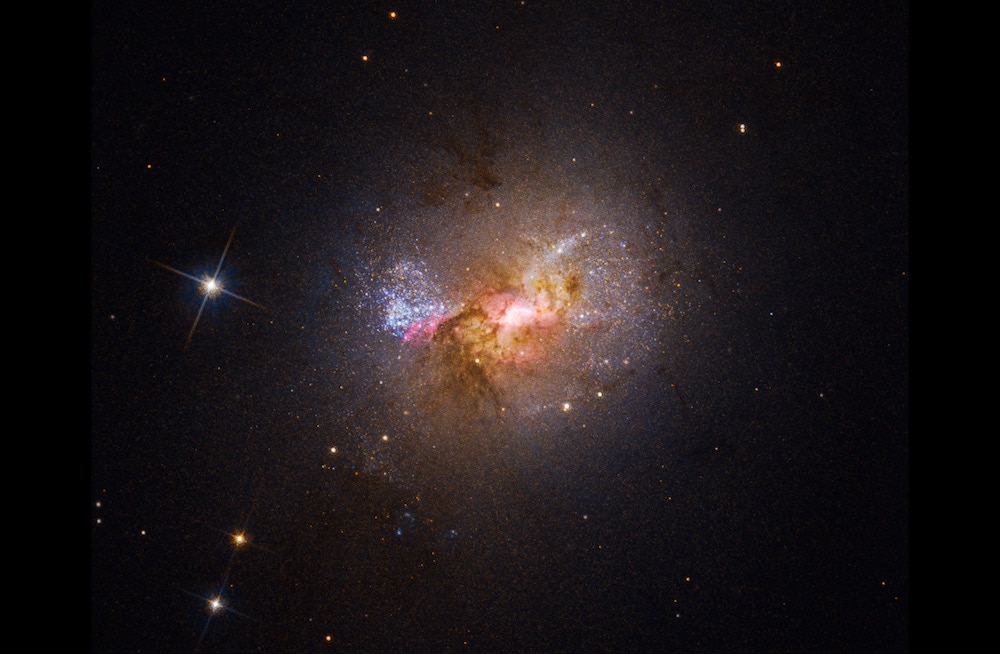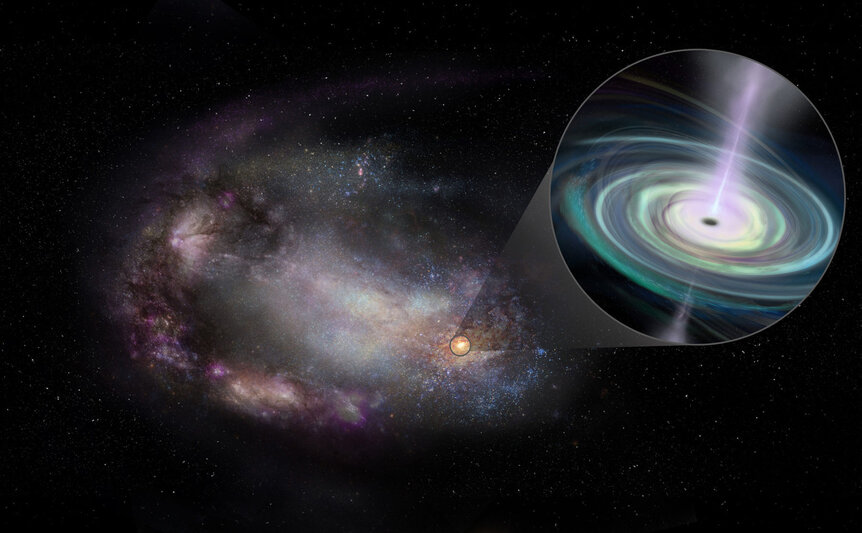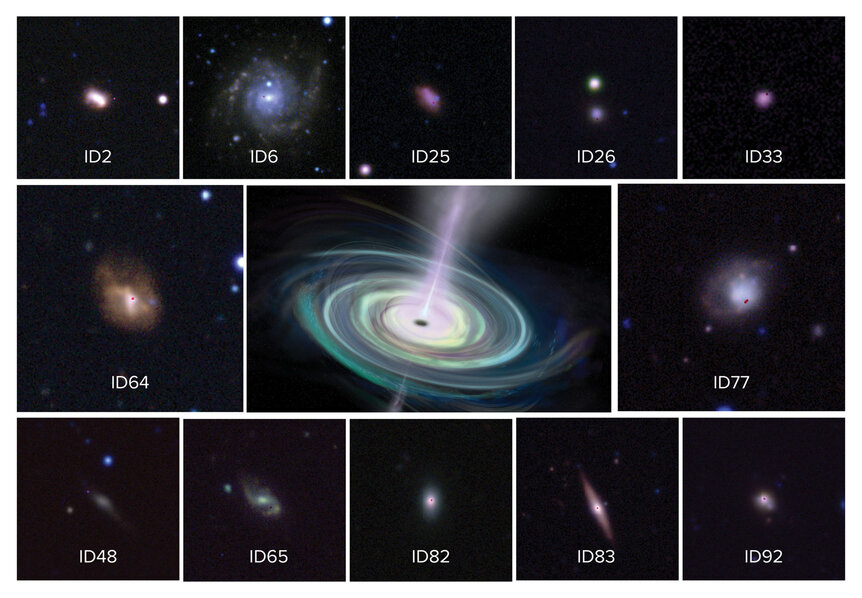Create a free profile to get unlimited access to exclusive videos, sweepstakes, and more!
Astronomers find a treasure trove of black holes in small galaxies
Dwarf galaxies have active black holes hiding in plain sight.

We know that essentially all big galaxies, like our own Milky Way, have supermassive black holes in their centers. We also strongly suspect these enormous monsters with millions or billions of times the Sun’s mass may have grown from smaller “seed” black holes called intermediate-mass black holes — or IMBHs — which have thousands to hundreds of thousands of solar masses.
We also know that smaller galaxies, called dwarf galaxies, have biggish black holes in them, most probably IMBHs. But do all dwarf galaxies have them, or some percentage, or what? That’s hard to say. When a black hole is actively feeding, gobbling down interstellar material, that matter gets infernally hot and bright, making it easy to spot. However, dwarf galaxies also tend to make stars at a high rate, which also emits a lot of light and can mimic the appearance of having a bright, feeding black hole.
A new method recently developed by a team of astronomers tweaks an older method to separate the two processes, and does a much better job at finding active black holes than the old way. And it has revealed a veritable treasure trove of black holes in nearby dwarf galaxies [link to paper].
The methods used here are subtle. Unlike the Sun, which emits light at all wavelengths in a continuum, gas clouds in space emit light at very specific wavelengths — think of them as colors — which astronomers call lines. If you want some details, I wrote about this process in an earlier article, and cover it in detail in my episode of Crash Course Astronomy: Light. Each element in a gas cloud emits light in a set of narrow colors, and this acts like a fingerprint that tells us that element is there, as well as things like how much is there, how hot it is, what the density is, and more.
Both matter swirling around in a black hole and gas clouds forming stars emit these lines, and it’s a long and somewhat complicated chain of measurements needed to distinguish the two, looking at ratios of the intensities of the lines emitted by oxygen, hydrogen, nitrogen, and sulfur, for example. There’s a standard set of line ratios used to look at dwarf galaxies and see if they have active black holes versus lots of star formation, and what the astronomers found is that this method doesn’t work well if a dwarf galaxy is being really fecund — making lots of stars at a high rate — or if the galaxy has a lower than usual amount of heavy elements in it. Or both.
Thing is, this is the case for a lot of nearby dwarf galaxies! So the standard method isn’t working well and potentially missing a lot of active black holes in these wee nearby galaxies. So, in a nutshell, they tried using a different set of line ratios and applied it to a deep survey of the sky that looks at essentially every dwarf galaxy out to a certain distance from us.
What they found was startling: A lot of galaxies IDed as star-forming using the old method are in fact both making lots of stars and hosting an active black hole. The old method estimated that about 1% of all nearby dwarf galaxies were like this, but the new method shows they actually make up from 3 – 16%! That’s a lot more. Even better, they found that almost all the newly found double-duty dwarf galaxies have a low ratio of heavy elements, a clear indication that this new method has the advantage over the old one.
They were also able to make lots of sub-categories of galaxies, including ones with different types of black hole activity, which can depend on the orientation at which we see the material around it. That’s a big step as well, helping astronomers understand the detailed dynamics of what’s happening in the hearts of dwarf galaxies.
All of this is important for two big reasons. One is that dwarf galaxies are everywhere, but are faint enough that seeing them at great distance is difficult. Categorizing the ones we see nearby will help astronomers understand ones at greater distance that are harder to study.
The other is that we think big galaxies grow in part due to eating dwarf galaxies. This happened a lot in the early Universe when galaxies were closer together, but it still happens today — literally today, since we see their remains in the Milky Way. If we want to understand how big galaxies are born, grow, evolve, and turn into the mighty structures we see now, we need to understand the more humble dwarf galaxies. This is a good step in the right direction.




























